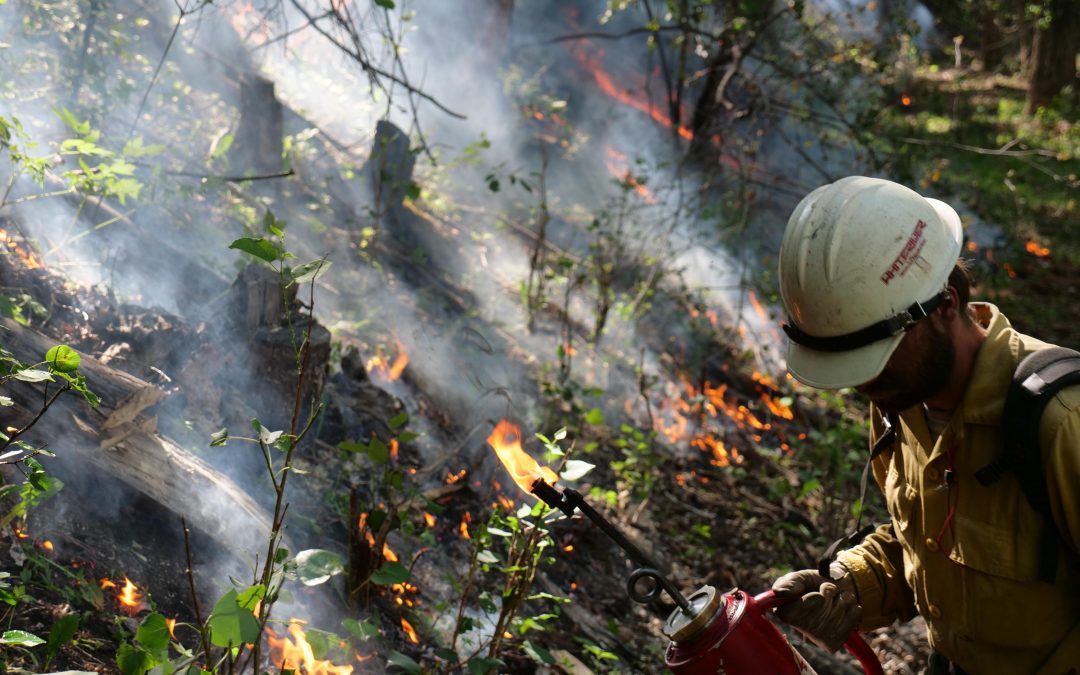By Gus Jarvis
“The timing of this story is especially important right now,” Danny Margoles, coordinator of the Dolores Watershed Resilient Forest Collaborative (DWRFC), said on June 17 as numerous wildfires spread in southwestern Colorado, aided by hot, dry and windy conditions. “The big one is the East Canyon Fire, which is in our region and is burning on BLM [Bureau of Land Management] and private lands. Some folks have been evacuated from their homes.”
As crews fight the fires, the DWRFC is facilitating a dialogue with the area’s stakeholders, including representatives from the timber industry, conservation groups, the U.S. Forest Service, business owners, and homeowners. The aim is to draft an overarching strategic plan by this fall to reduce wildfire risk on public and private lands within the group’s project area in Dolores and Montezuma counties.
Margoles says the forests in the upper Dolores River watershed have a history of fire suppression and clear cutting that, along with climate change, has elevated wildfire risk. Now collaborating through online meetings due to the COVID-19 pandemic, the group’s next meeting will include various maps for stakeholders to identify priority areas, including wildland urban interfaces and locations with potential for social erosion due to wildfire that might affect the Dolores River watershed and McPhee Reservoir, Margoles says.
“How to think across private and public boundaries is one of the larger goals. We are going to be drawing a lot of circles on the maps together,” Margoles says. “How do we reduce risk and help maintain resilient ecosystems and forests regardless of ownership boundaries? We are working to prioritize where the work should be done first.”
While the stakeholders working within the group agree on overarching goals, much of the hard work is yet to come as details and mitigation strategies come into focus, Margoles says.
As DWRFC moves forward in formulating its strategic plan, the group has already had an impact on residents with a program aimed to help them reduce wildfire risk by improving defensible space.
“With the East Canyon Fire, a good highlight is that one of our key partners has done a lot of work with one of the subdivisions that was evacuated. They helped improve their defensible space and are pretty well positioned,” Margoles says.
Even as the DWRFC works locally, the group is part of a larger, regional conversation within the San Juan Headwaters Forest Health Partnership (SJHFHP). That partnership is bringing stakeholders together to identify community risks and needs, then planning projects to address them within the Pagosa Ranger District of the San Juan National Forest.
“We are trying to look at present threats, future threats and what it’s going to take to keep our community sustainable and resilient,” says SJHFHP coordinator Aaron Kimple. “There are things we need to focus on locally but what working together [with the DWRFC] has offered us is the ability to expand and get resources on a larger scale.”


 Print
Print